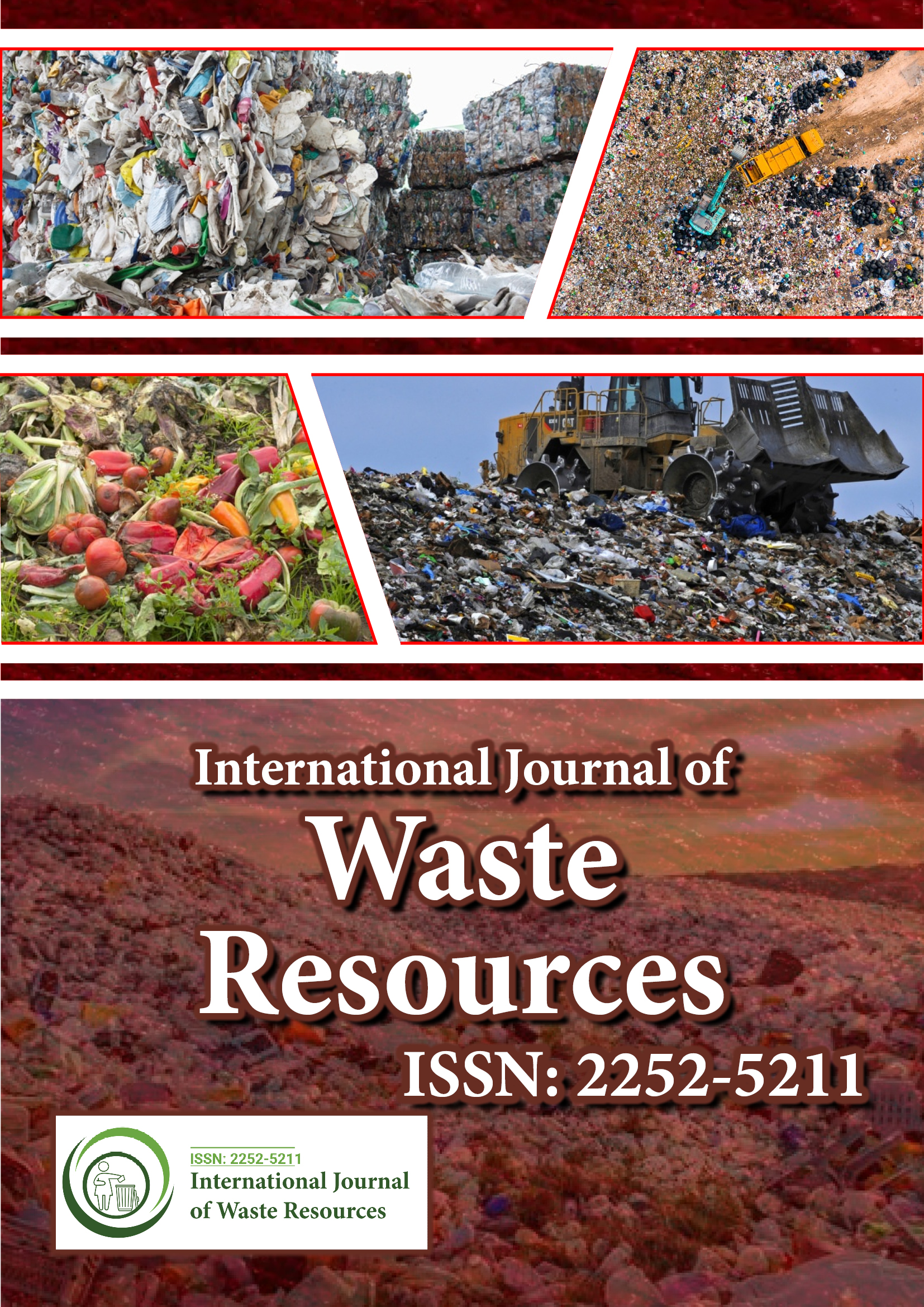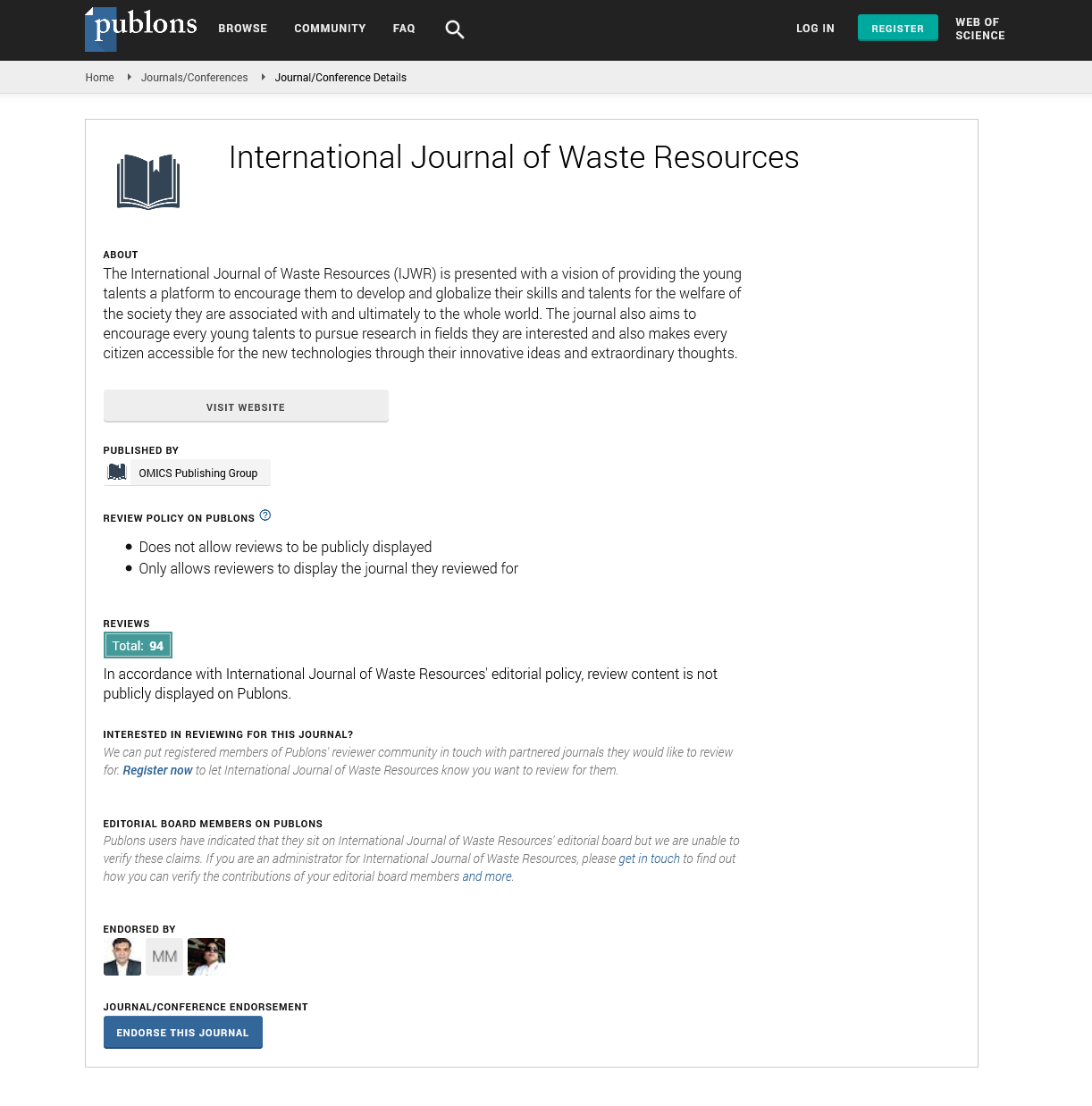Indexed In
- Open J Gate
- The Global Impact Factor (GIF)
- Open Archive Initiative
- VieSearch
- International Society of Universal Research in Sciences
- China National Knowledge Infrastructure (CNKI)
- CiteFactor
- Scimago
- Ulrich's Periodicals Directory
- Electronic Journals Library
- RefSeek
- Directory of Research Journal Indexing (DRJI)
- Hamdard University
- EBSCO A-Z
- Publons
- Google Scholar
Useful Links
Share This Page
Journal Flyer

Open Access Journals
- Agri and Aquaculture
- Biochemistry
- Bioinformatics & Systems Biology
- Business & Management
- Chemistry
- Clinical Sciences
- Engineering
- Food & Nutrition
- General Science
- Genetics & Molecular Biology
- Immunology & Microbiology
- Medical Sciences
- Neuroscience & Psychology
- Nursing & Health Care
- Pharmaceutical Sciences
Perspective Article - (2024) Volume 14, Issue 3
Innovative Approaches to Converting Waste into Valuable Resources: Sustainable Practices and Technological Solutions
Meizhen Tischberger*Received: 28-Aug-2024, Manuscript No. IJWR-24-27473; Editor assigned: 30-Aug-2024, Pre QC No. IJWR-24-27473(PQ); Reviewed: 13-Sep-2024, QC No. IJWR-24-27473; Revised: 20-Sep-2024, Manuscript No. IJWR-24-27473(R); Published: 27-Sep-2024, DOI: 10.35248/2252-5211.24.14.587
Description
The increasing global population and urbanization are directly linked to heightened waste generation. Municipal solid waste, industrial by-products, agricultural residues and plastic pollution have become pervasive issues, straining traditional waste management systems. While recycling has long been a part of waste management, many materials, such as certain plastics and composite materials, remain difficult to recycle through conventional means. As a result, a growing number of scientists, engineers and environmentalists are exploring new methods to not only recycle but upcycle waste into useful materials or energy. The necessity of moving towards more advanced wasteto- resource models is most important. These models enable the recovery of valuable components that might otherwise be lost in the waste stream, reducing the demand for virgin materials and decreasing energy consumption in the manufacturing process. In addition, they align with global sustainability goals, encouraging a more resilient and environmentally responsible future. The successful conversion of waste into valuable resources dependsc on advancements in technology. Over the last few decades, various innovative technological solutions have been developed to address the complexity of waste materials, ensuring that the recovery process is more efficient, economically viable, and environmentally friendly. Waste-To-Energy (WTE) technologies have become central to waste management strategies. These technologies focus on the conversion of non-recyclable waste into electrical energy, heat, or fuel. Incineration, pyrolysis and gasification are common processes within this category. Incineration involves burning waste at high temperatures to generate heat that can be converted into electricity. Pyrolysis and gasification, on the other hand, involve heating waste in a controlled, low-oxygen environment, breaking it down into synthetic gas, liquid fuel and solid residues. These fuels can then be used to replace fossil fuels, reducing dependency on non renewable energy sources. Biological processes, such as anaerobic digestion and composting, have long been used to process organic waste. Anaerobic digestion involves the breakdown of organic matter by microorganisms in the absence of oxygen, producing biogas (primarily methane), which can be used for power generation or as a fuel for vehicles. Composting, similarly, transforms organic waste into nutrient-rich compost, a valuable resource for agriculture. Advances in biological waste treatment technologies have improved the efficiency of these processes, making them more widely applicable and scalable, particularly for agricultural and food industry waste. The plastic waste crisis is one of the most pressing environmental issues of the modern age. While traditional plastic recycling processes have limitations, new technologies are emerging to address the complexities of plastic waste. Chemical recycling, or depolymerization, is one such innovation. This method breaks down plastic polymers into their original monomers, allowing them to be reformed into new plastics or used as feedstock for other industrial processes. Similarly, advances in enzyme-based recycling processes have shown promise in breaking down certain types of plastics more efficiently, offering a more sustainable way to address plastic waste. Designing products with their end-of-life in mind is a key strategy in reducing waste. The principle of "design for disassembly" allows for easier recovery of materials when the product reaches the end of its useful life. Similarly, adopting eco-design principles, such as using renewable materials, reducing material usage and minimizing energy consumption during production, can significantly reduce waste generation in the first place.
Conclusion
Engaging local communities in waste management initiatives can foster a sense of ownership and accountability. Community based composting, recycling programs and small-scale waste-toenergy solutions empower individuals to contribute to the circular economy. By increasing awareness and collaboration, these grassroots efforts help reduce the amount of waste sent to landfills while generating valuable resources at the local level. A central element of waste-to-resource strategies is the establishment of a circular economy, where materials are continuously reused, remanufactured, or recycled. Through the implementation of product design strategies that prioritize repairability, durability and recyclability, manufacturers can create products that are more easily dismantled and repurposed.
Citation: Tischberger M (2024). Innovative Approaches to Converting Waste into Valuable Resources: Sustainable Practices and Technological Solutions. Int J Waste Resour. 14:587.
Copyright: © Tischberger M. This is an open-access article distributed under the terms of the Creative Commons Attribution License, which permits unrestricted use, distribution, and reproduction in any medium, provided the original author and source are credited.

